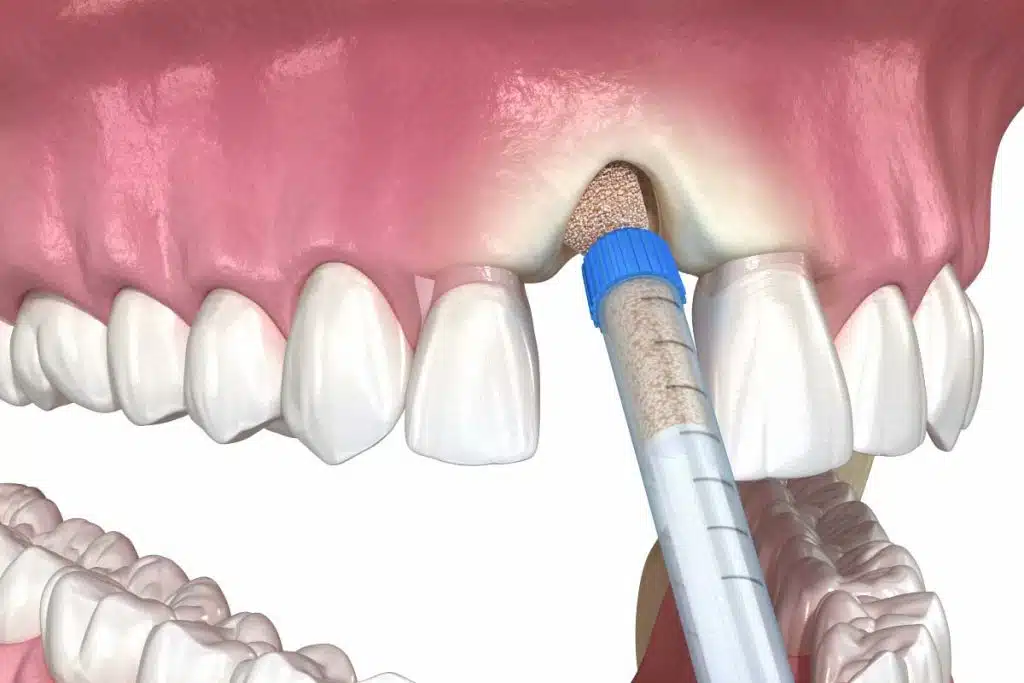Understanding Dental Bone Grafts: A Comprehensive Guide
If you’re exploring dental implants or other restorative dental procedures, you may have heard the term “bone graft.” It might sound a little daunting at first, but don’t worry—dental bone grafts are a common and highly effective solution in modern dentistry. In this blog, we’ll walk you through everything you need to know about dental bone grafts: what they are, why they’re needed, the types available, the procedure itself, recovery, and even potential risks. By the end, you’ll have a clear understanding of this essential process and feel more confident about what it entails.
What is a Dental Bone Graft?
A dental bone graft is a surgical procedure that adds bone or bone-like material to your jaw. Think of it as reinforcing the foundation of a house before adding a new structure. The goal? To create a solid base for dental implants or to preserve your jaw’s shape and strength after losing a tooth. Without enough bone, implants can’t anchor properly, and your jaw might weaken over time.
Why Are Bone Grafts Necessary?
When you lose a tooth, the bone that once supported it starts to shrink or “resorb” because it’s no longer stimulated by chewing. Over time, this can weaken your jaw and even change the shape of your face. Bone grafts step in to:
- Restore bone volume: Providing enough support for a dental implant.
- Preserve jaw structure: Preventing further bone loss after tooth extraction.
- Enhance aesthetics: Keeping your facial features and smile looking natural.
Types of Dental Bone Grafts
Not all bone grafts are the same—dentists use different types depending on your needs. Here’s a breakdown of the main options:
1. Autografts (Your Own Bone)
- What it is: Bone taken from another part of your body, like your chin, hip, or jaw.
- Pros: Since it’s your own tissue, there’s a lower risk of rejection and a high success rate.
- Cons: Requires a second surgical site, which can mean more discomfort and a longer recovery.
2. Allografts (Donor Bone)
- What it is: Bone sourced from a human donor, carefully processed and sterilized for safety.
- Pros: No extra surgery on your body, making it less invasive.
- Cons: There’s a slight chance of an immune reaction, though this is rare with modern processing.
3. Xenografts (Animal Bone)
- What it is: Bone from an animal (usually a cow or pig), treated to be safe and compatible.
- Pros: Readily available and works well for many patients.
- Cons: Some people might feel uneasy about using animal-derived materials.
4. Synthetic Grafts (Man-Made Materials)
- What it is: Artificial substances like calcium phosphates or bioactive glass designed to mimic natural bone.
- Pros: No risk of disease transmission and customizable to your needs.
- Cons: May not blend with your natural bone as well as other options in some cases.
Your dentist will pick the best type for you based on your situation and preferences.
The Bone Grafting Procedure: What to Expect
Curious about what happens during a bone graft? Here’s a simple step-by-step guide to ease your mind.
1. Consultation and Planning
- Your dentist will use X-rays or 3D scans to check your jawbone and decide where the graft should go.
- You’ll talk about anesthesia—usually local, though sedation is an option for bigger procedures.
2. The Surgery
- Incision: A small cut is made in your gum to access the bone.
- Graft Placement: The chosen material is added to the area needing support.
- Securing the Graft: A protective membrane might be placed over it to aid healing.
- Closing Up: The gum is stitched back together.
The whole process typically takes 45 minutes to an hour, depending on the case.
3. Healing and Integration
- Over the next few months, the graft fuses with your natural bone in a process called osseointegration.
- Patience is key here—following your dentist’s advice ensures everything heals correctly.
Recovery and Aftercare
Recovery from a bone graft is usually smooth if you take good care of yourself. Here’s what to expect and how to manage it:
1. Right After Surgery
- Swelling and Discomfort: A bit of swelling or soreness is normal—ice packs and pain relievers can help.
- Bleeding: Minor bleeding might occur; bite on gauze as instructed to control it.
- Diet: Stick to soft foods like soup, yogurt, or mashed potatoes for a few days.
2. Long-Term Healing
- Oral Hygiene: Keep your mouth clean but avoid brushing the graft site at first. A special mouthwash might be recommended.
- Activity: Take it easy for a few days to avoid disrupting the healing.
- Checkups: Follow-up visits let your dentist monitor progress.
You’ll likely resume normal activities within days, but full bone integration takes 3 to 6 months.
Potential Risks and Complications
Bone grafts are generally safe, but like any surgery, there are some risks to know about:
- Infection: Uncommon, and antibiotics can prevent it.
- Graft Failure: In rare cases, the graft doesn’t take, needing further treatment.
- Nerve Damage: Very rarely, nerves might be affected, causing numbness or tingling.
- Sinus Issues: For upper jaw grafts, there’s a small chance of sinus complications.
Working with a skilled dentist and following aftercare tips keeps these risks low.
Key Takeaways
Dental bone grafts are a game-changer for many dental treatments, especially implants. Here’s the rundown:
- They rebuild and strengthen your jaw, setting the stage for implants or preserving its shape.
- Different types suit different needs—your dentist will guide you to the right one.
- The procedure is simple, with a short surgery and a few months of healing.
- Recovery is doable with proper care, and serious issues are rare.
If a bone graft is on the table for you, chat with your dentist about your options and whether it’s the right fit. With the right approach, it can pave the way for a strong, healthy smile.


